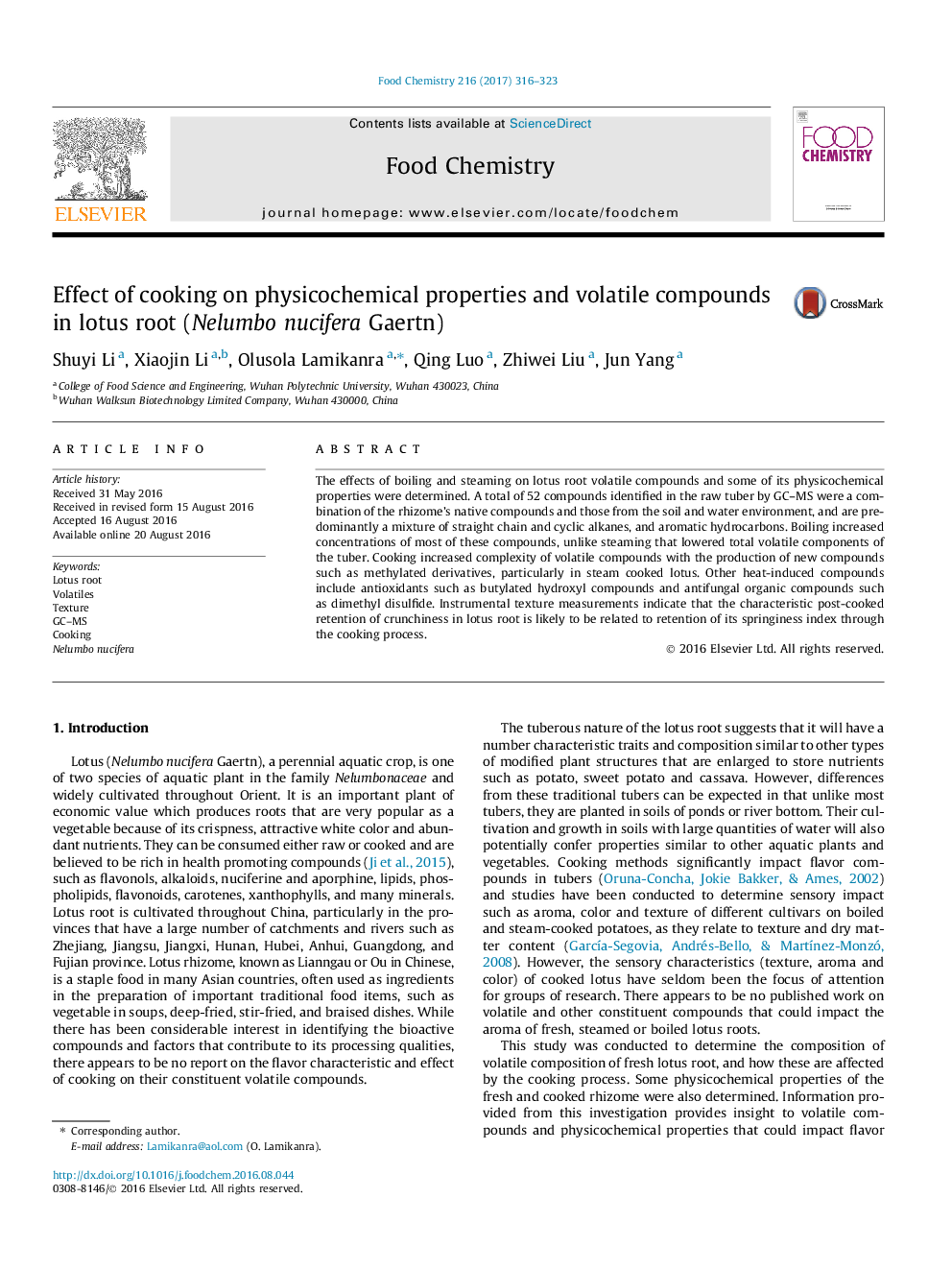| کد مقاله | کد نشریه | سال انتشار | مقاله انگلیسی | نسخه تمام متن |
|---|---|---|---|---|
| 1183083 | 1492076 | 2017 | 8 صفحه PDF | دانلود رایگان |
• Lotus root volatile compounds are mainly alkanes and aromatic hydrocarbons.
• Cooking methods significantly impact volatile components of lotus root.
• Cooked lotus root crunchiness likely results from springiness index retention.
• Both tuberous and aquatic nature of lotus root impact its biochemical properties.
• In vitro synthesis may contribute to phthalate levels found in cooked lotus root.
The effects of boiling and steaming on lotus root volatile compounds and some of its physicochemical properties were determined. A total of 52 compounds identified in the raw tuber by GC–MS were a combination of the rhizome’s native compounds and those from the soil and water environment, and are predominantly a mixture of straight chain and cyclic alkanes, and aromatic hydrocarbons. Boiling increased concentrations of most of these compounds, unlike steaming that lowered total volatile components of the tuber. Cooking increased complexity of volatile compounds with the production of new compounds such as methylated derivatives, particularly in steam cooked lotus. Other heat-induced compounds include antioxidants such as butylated hydroxyl compounds and antifungal organic compounds such as dimethyl disulfide. Instrumental texture measurements indicate that the characteristic post-cooked retention of crunchiness in lotus root is likely to be related to retention of its springiness index through the cooking process.
Journal: Food Chemistry - Volume 216, 1 February 2017, Pages 316–323
